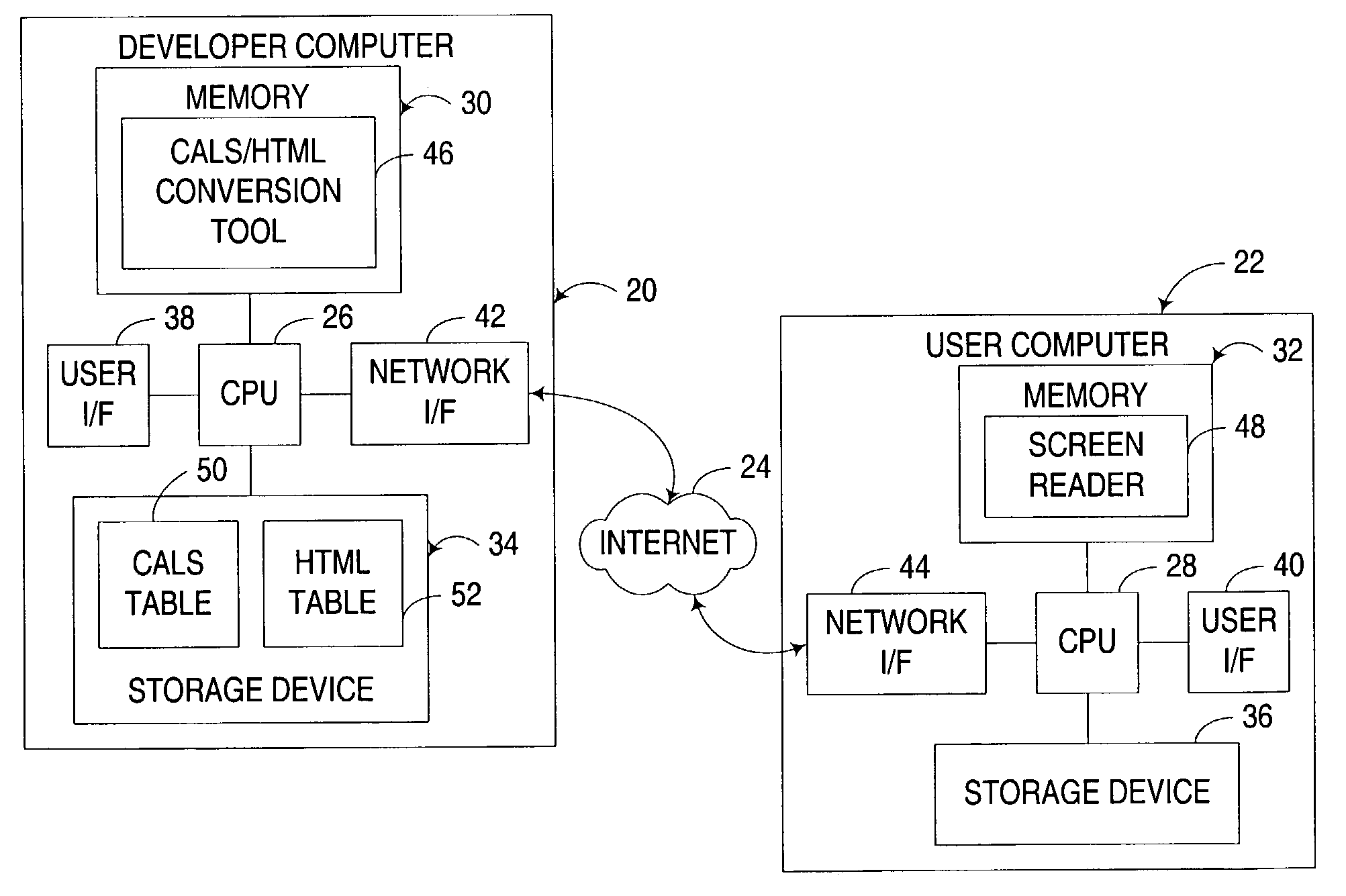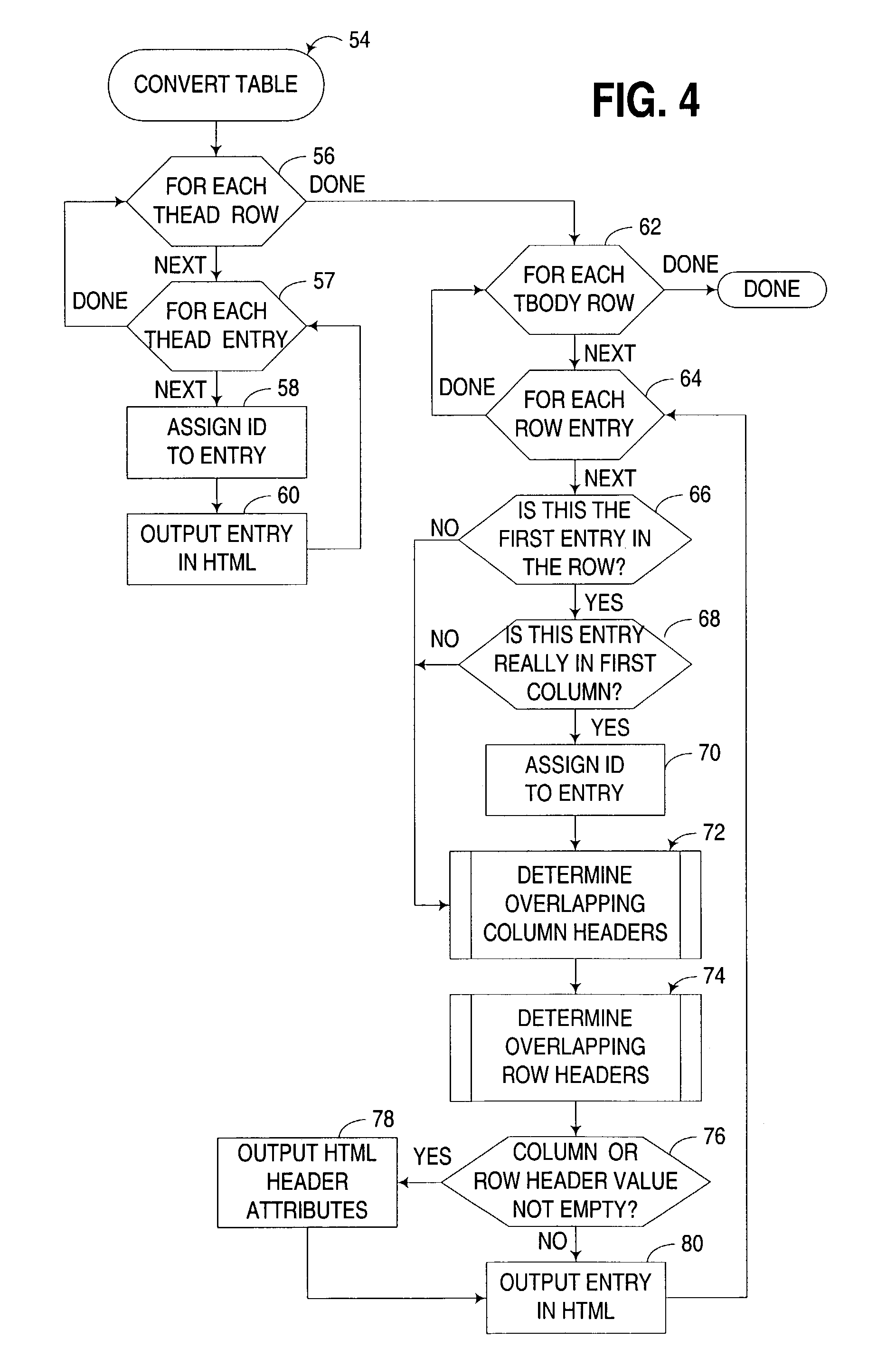Automated conversion of CALS-compatible tables to accessible HTML tables
- Summary
- Abstract
- Description
- Claims
- Application Information
AI Technical Summary
Benefits of technology
Problems solved by technology
Method used
Image
Examples
Embodiment Construction
[0023]The embodiments discussed hereinafter take tables marked up using the CALS DTD, the Oasis XML Exchange Table Model, or another CALS-compatible format and converts them into HTML tables that are accessible to screen readers and other programs requiring knowledge of what headers apply to a given cell in a table.
[0024]To make an HTML table accessible, every non-header cell, or entry, in the table must indicate which headers apply to that cell. This is accomplished by first giving every header cell an identifier, or ID, attribute. Each cell in the table must then point to every related header cell, which is accomplished by placing the header's ID into the “headers” attribute for that cell. It will be appreciated that identifier and headers attributes used for column headers may either be similar to or different from the identifier and headers attributes used for row headers.
[0025]While it is relatively straightforward to determine the headers attribute in simple tables, in which n...
PUM
 Login to View More
Login to View More Abstract
Description
Claims
Application Information
 Login to View More
Login to View More - R&D
- Intellectual Property
- Life Sciences
- Materials
- Tech Scout
- Unparalleled Data Quality
- Higher Quality Content
- 60% Fewer Hallucinations
Browse by: Latest US Patents, China's latest patents, Technical Efficacy Thesaurus, Application Domain, Technology Topic, Popular Technical Reports.
© 2025 PatSnap. All rights reserved.Legal|Privacy policy|Modern Slavery Act Transparency Statement|Sitemap|About US| Contact US: help@patsnap.com



